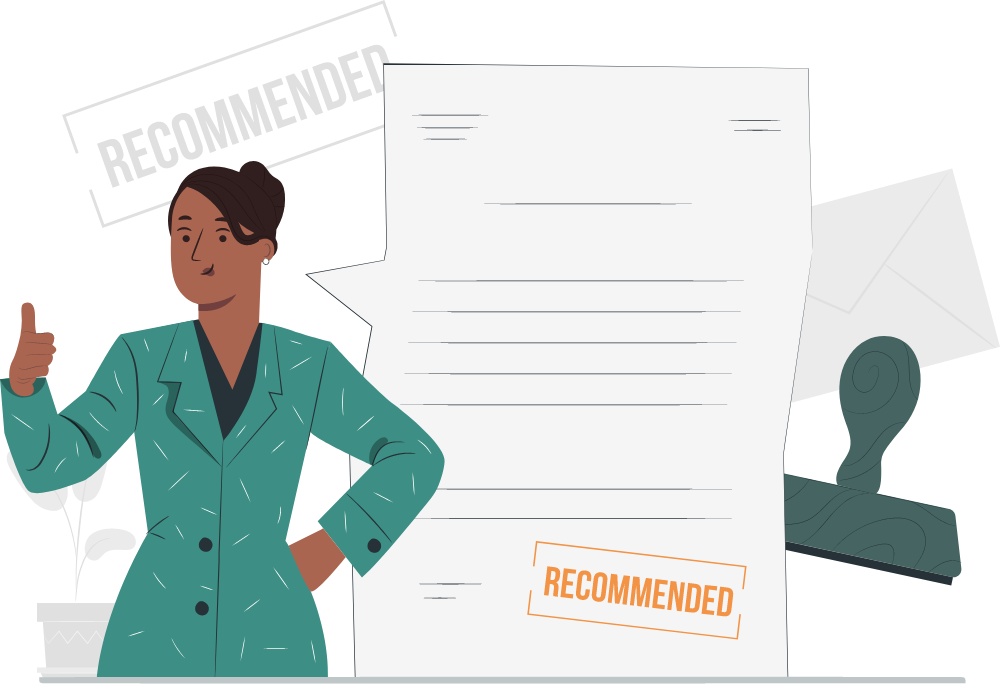What is the Purpose of a Cover Letter?
Not all candidates are confident in their cover letter writing skills simply because they do not understand what is a cover letter used for. A cover letter has many purposes: a casual introduction, encouraging the recruiter to read your resume, and getting you more job offers. Want to know more? Read our article on the purpose of a cover letter.
Not all candidates are confident in their cover letter writing skills simply because they do not understand what is a cover letter used for. A cover letter has many purposes: a casual introduction, encouraging the recruiter to read your resume, and getting you more job offers. Want to know more? Read our article on the purpose of a cover letter.

A quick Google search reveals that whether to send a cover level letter or not remains a highly controversial subject. Cover letters came around when employers could not easily access information on job seekers other than through their application documents. A resume and an accompanying cover letter were a means of introduction where applicants could detail themselves and their professional accomplishments to recruiters and employers.
But now, some job seekers have chosen to ditch the cover letter. They don’t understand how a cover letter can help recruiters learn more about them when social media is at their fingertips. According to a 2018 CareerBuilder survey, 70% of employers/recruiters use social media to screen job candidates during the hiring process. Other job seekers find writing an additional document particularly challenging. The 2019 Job Seeker Nation Survey by Jobvite reveals that 9% of job seekers give up on sending an application, including a cover letter because they find it too long and complex to craft.
Does it mean that attaching a cover letter is as outdated as using a rotary phone? Are applicants right in skipping a cover letter? Not at all.
The hiring process is quite conservative in its essence. We all use technology and live in a fast-paced environment, but employers still require the same paperwork now as ten years ago, including a cover letter.

What is the point of a cover letter?
Let’s start with the basic idea that a cover letter is mandatory as a resume in the job hunt. If a job posting includes a cover letter among its requirements, it is easy: you simply do as you are told. It leaves no space for doubts because a cover letter is requested of you. But if a cover letter is not mentioned in the job description, it is up to applicants to decide whether to attach it or skip it.
You may think that you gave all the information about your work experience and qualifications in your resume. You can assume that recruiters don’t read cover letters or that they are useless. But considering a cover letter as a compliance test or a secret weapon will be an advantage rather than a weakness on your part.
First, you cannot know for sure whether a recruiter will read your application thoroughly or not. Some recruiters may not even consider your resume without a cover letter; when choosing between similar two candidates (one with a cover letter and one without), others will go with the cover letter as the better fit for a role. The point is that you just don’t know what will sway the recruiter, but your odds of being summoned for a job interview can only increase by including a cover letter.
With this understanding in mind, the better-written your cover letter, the bigger your competitive edge. A compelling cover letter is one more way to stand out and make an impression about yourself on the recruiter. It allows you to talk about yourself in a more casual tone.
So we can agree that a resume is a formal document and gives an outline of your work experience, and a cover letter allows you to tell your story and invent your narrative. If told well, it sticks with a recruiter.
Cover Letter Structure
Candidates find it hard to write an effective cover letter because they don’t know what to write. Should they repeat their resume? How can they catch the recruiter’s attention? You will have far fewer questions if you simply follow a cover letter structure made of four clear-cut paragraphs.
Paragraph One: The Introduction
The primary purpose of a cover letter for a job is to introduce yourself. After you address the hiring manager, you state your intention: “I’m writing to inquire about an opening for…” You give your reason for writing, the position you’re applying for, and how you learned about this position. Mention where you saw the job posting. If someone referred to you, give the individual’s name.
Paragraph Two: Your Experience
Specify how exactly you meet their job qualifications. It can be brief where you mention the number of years of experience or elaborate on a few of your most impressive capabilities that align with the job description. Simply put, this paragraph is where you explain what you offer and why you’re qualified: “I offer X years of experience in [whatever your specialty is] and skills [required in the job description], which makes me a strong candidate for this position.”
Paragraph Three: Attention-Grabbing
Keep in mind that the main goal of the cover letter is to get the hiring manager to read your resume and invite you for an interview. You can create some intrigue by telling them where they can find more information on your achievements: “The top portion of my attached resume highlights my career profile and three significant accomplishments that are also in alignment with this position.”
Paragraph Four: Conclusion
Express your interest in having an interview: “I’d welcome the opportunity to speak with you if you feel I’d be a strong candidate for this position in your organization.” Remember to add your contact details and a write-off.
Following this cover letter structure and using our cover letter writing tips, you can produce a well-written application of any length and adjust it for any job in no time.
Cover Letter Writing Tips
In addition to the cover letter structure, there are many nuances to keep in mind. From font type and font size to format and length, use these writing tips to make your cover letter more to the point:
- Length. The general recommendation is to keep your cover letter under one page at all times. You can make it much shorter: telling about yourself in the most concise and succinct form shows your excellent writing skills and respect for the recruiter’s time.
- Format. As much as resumes, cover letters follow a business format. Align all text at the left margin. Avoid indenting paragraphs.
- Greeting and Address. It has become customary to address your cover letter to a hiring manager by name, so take some time and effort to find the individual’s name. If it’s not possible, address your cover letter to the title, business function, or discipline most clearly related to the position for which you’re applying. For example, ‘Dear Hiring Manager’ or ‘Dear Selection Committee.’
- Fonts. Don’t use anything fancy. Arial, Courier New, Calibri, Verdana, and Times New Roman are the most common fonts used on resumes and cover letters. Readability is the main aim, so use font size 10 to 12 point type. It is acceptable to use a bold font or bullet points to draw attention to important points.
Frequently Asked Questions
Job seekers come from different experiences and backgrounds, but many want to understand various cover letter writing aspects correctly. We gathered 5 Common Cover Letter Questions and Answers to help you navigate the writing process.
- Should I submit a cover letter if I have 10+ years of experience and am an ideal candidate for this role?
A: Cover letters are a must for both entry-level specialists and seasoned professionals. It is your opportunity to show a glimpse of your personality. If you feel so confident that your resume speaks for itself, address it in your cover letter. Not word for word, obviously, but show off your awesomeness. Diversify the formality of your resume by making a friendly and strong cover letter.
- I intend to send 20-30 resumes a day. How can I possibly create each cover letter from scratch?
A: Your cover letter should be original and live. It shouldn’t come off as a trite document used over and over again. How you achieve this is up to you. We write in each article that the job hunt is a 9-to-5 job in itself. Looking for a job is time-consuming and energy-expensive. To save time and ease the process, you can seek help producing a cover letter for each job posting that interests you by using an online editor. With GetCoverLetter, you can make a customized cover letter in less than 8 minutes, significantly expediting your job hunt and allowing you to send out more applications in much less time.
- How can I address a career gap year in a cover letter?
A: A cover letter is an excellent way to explain anything out of the ordinary to a prospective employer. You can mention if you had maternity leave, were laid off, changed a career path, or took time off to travel in a cover letter. However, be brief. An employer is more interested to learn about your relevant skills and experience.
- If a job posting doesn’t specify, should I send a cover letter as an attachment?
A: Nowadays, you can send cover letters in the body of an email or as an attachment. You never know how exactly a recruiter will prefer to get it. However, if you send your cover letter as the email body, a recruiter will catch a glimpse of it when they open your email. If you have a strong opening line, the recruiter will keep reading and - voila – your resume gets selected for the next round of the hiring process.
- Is there a difference between a cover letter and a letter of interest?
A: A cover letter responds to a specific job posting. A letter of interest is submitted to inquire about a vacancy that is not advertised and express a willingness to work with the company in the future. Thus, the primary difference lies not in the letter structure but rather in intent.
The Bottom Line
Now that you know the goal of a cover letter, you can create an application with less dread and displeasure. Present yourself in a succinct yet casual form to a hiring manager to capture their attention and promote your resume. Use it as an opportunity to show yourself in a more personal way and express your enthusiasm and passion for the profession and towards the organization.
As long as you follow the cover letter structure, you will find the right words to introduce your candidacy and show how perfectly you fit the job description. If you want to end your job hunt as quickly as possible, you should use every tool in your toolkit.

